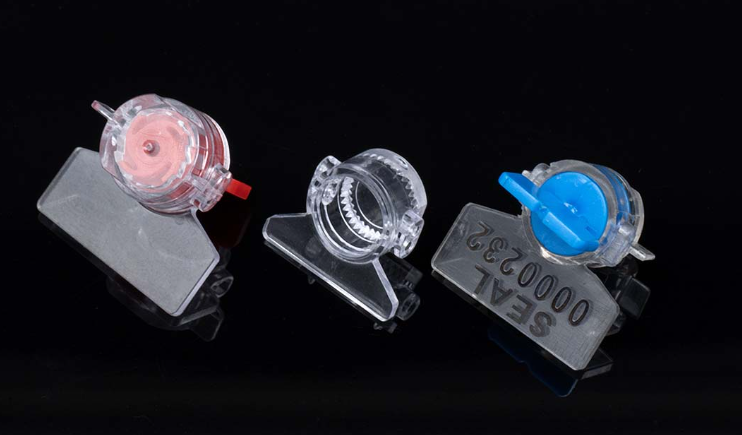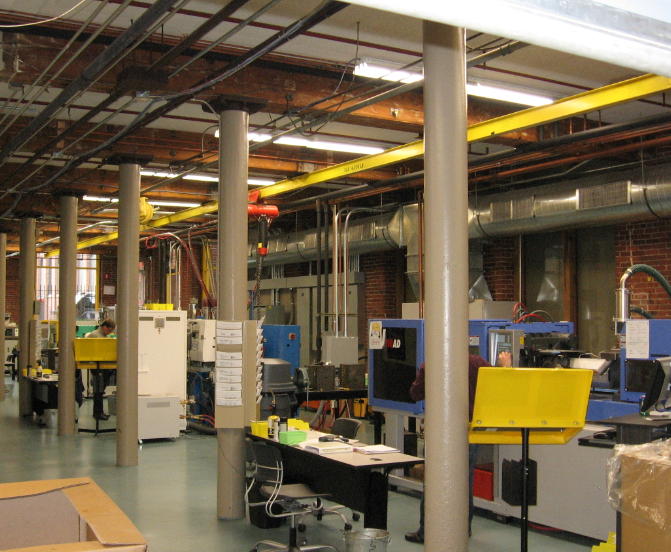Injection molding excels in mass production, offering high efficiency, precision, and cost-effectiveness for specific applications.
Overview of Injection Molding
Injection molding stands as a pivotal technique in manufacturing, offering versatility and efficiency in producing a wide range of plastic products. This method involves melting plastic pellets and injecting them under high pressure into a mold cavity. The plastic solidifies into the desired shape, showcasing the process’s ability to create intricate and uniform products.

Basic Principles of Injection Molding
At the core of injection molding is the process of melting plastic materials. Manufacturers typically use thermoplastic polymers, known for their ability to melt and solidify repeatedly without significant degradation. The machinery involved includes an injection unit and a clamping unit. The injection unit melts the plastic and injects it into the mold, while the clamping unit holds and cools the mold. Key parameters such as temperature, pressure, and injection speed play a crucial role in determining the quality of the final product.
Temperature control is critical, as it must be high enough to melt the plastic but not so high as to degrade the material. The pressure, usually measured in tons, ensures that the molten plastic fills the entire mold cavity, affecting the product’s detail and quality. The injection speed, which influences how quickly the mold is filled, must be optimized to prevent defects in the final product.
Historical Development and Modern Advances
Injection molding has evolved significantly since its inception in the late 19th century. Originally developed for producing billiard balls, it has now become a cornerstone in the production of a diverse array of products. Modern advances have introduced computer-aided design (CAD) and computer-aided manufacturing (CAM), elevating the precision and efficiency of this process.
Technical Aspects of Injection Molding
Injection molding, a process integral to the manufacturing industry, involves intricate technicalities ranging from the materials used to the machinery and optimization of process parameters. Understanding these aspects is crucial for achieving efficiency and quality in the production of plastic parts and products.
Materials Used in Injection Molding
A wide variety of materials are suitable for injection molding, each offering distinct properties and advantages. The most commonly used materials include:
- Polyethylene (PE): Known for its versatility and low cost, polyethylene is ideal for everyday products.
- Polypropylene (PP): Valued for its flexibility and resistance to chemicals, polypropylene is a popular choice for containers and automotive parts.
- Polystyrene (PS): Polystyrene, used in products requiring a glossy finish, offers excellent aesthetic qualities.
- Acrylonitrile Butadiene Styrene (ABS): ABS combines strength and rigidity, making it suitable for high-impact applications.
Selecting the right material depends on the product’s intended use, required durability, and aesthetic considerations. The cost of materials also plays a significant role in determining the overall production budget.
Machinery and Equipment Requirements
The machinery for injection molding is specialized and consists of two main components:
- Injection Unit: Responsible for melting and injecting the plastic into the mold.
- Clamping Unit: Holds the mold in place during injection and cooling.
These machines come in various sizes and specifications. The clamping force, which can range from a few tons to several thousand, is a critical factor in determining the size of the parts that can be produced. The power consumption of these machines, directly impacting operational costs, varies based on their size and complexity.
Process Parameters and Optimization
Optimizing the injection molding process involves adjusting various parameters to achieve the desired quality and efficiency. Key parameters include:
Melt Temperature: Crucial for ensuring the plastic flows correctly into the mold.
Injection Pressure: Influences the filling of the mold and the quality of the final product.
Cooling Time: Determines the cycle time and affects the part’s structural integrity.
Comparative Analysis
Understanding how injection molding compares to other manufacturing processes is crucial in the industrial sector. This comparison highlights the unique advantages and limitations of each method, guiding manufacturers in selecting the most suitable process for their specific needs.
Injection Molding vs. Other Manufacturing Processes
Below is a multidimensional comparison between injection molding and other common manufacturing processes:
| Aspect | Injection Molding | 3D Printing | CNC Machining | Blow Molding |
|---|---|---|---|---|
| Materials Used | Thermoplastics, thermosetting plastics | Wide range including plastics, metals, and ceramics | Metals, plastics, composites | Mainly plastics like PE, PP |
| Production Speed | High-speed mass production | Slower, suitable for prototyping and small batches | Moderate, depending on complexity | Fast, mainly for hollow parts |
| Cost | High initial investment, low per-unit cost | Lower initial cost, higher per-unit cost | Moderate investment, varying per-unit cost | Moderate investment and cost |
| Precision and Quality | High precision, consistent quality | Varies, generally good precision | Very high precision | Good for hollow parts, less precision |
| Flexibility and Complexity | Limited to mold design | Highly flexible, can produce complex designs | High flexibility, suitable for complex parts | Limited to hollow parts |
| Scalability | Excellent for large-scale production | Best for small-scale or custom items | Suitable for small to medium batches | Good for large-scale production of hollow items |
Injection Molding excels in large-scale production of uniform parts, offering excellent precision and lower costs per unit. However, it requires significant upfront investment in mold design and machinery.
3D Printing stands out for its ability to produce complex geometries and is ideal for prototyping and small-scale production, but it can be more expensive on a per-unit basis.
CNC Machining offers unmatched precision and is suitable for a wide range of materials, making it ideal for high-quality, complex parts in smaller quantities.
Blow Molding is another method primarily used for creating hollow plastic parts like bottles and containers, offering fast production times but less precision and complexity compared to injection molding.
Efficiency and Productivity Considerations
Efficiency and productivity are paramount in manufacturing. Injection molding shines in these aspects due to its high-speed production capabilities and ability to produce vast quantities of parts with minimal labor. The process is highly automated, reducing the likelihood of human error and ensuring consistent product quality.
Quality and Precision in Injection Molding
Injection molding is renowned for its ability to produce high-quality, precise products consistently. The precision and reproducibility of products are central to this process, underpinned by stringent quality control measures and standards.
Precision and Reproducibility in Products
Injection molding’s precision lies in its ability to produce complex shapes with tight tolerances. This precision is achievable due to:
- Advanced Mold Design: Molds with intricate designs and smooth finishes ensure the precision of the final product.
- Precise Material Control: Consistent material properties and exact metering in the injection process contribute to uniform product quality.
- High-Pressure Injection: Ensures complete mold filling and consistency in product dimensions.
The reproducibility of injection molding is a standout feature. Once the mold is created, it can be used to produce thousands or even millions of parts that are virtually identical. This repeatability is crucial in industries where uniformity is essential, such as in medical device manufacturing or automotive parts production.
Quality Control Measures and Standards
Quality control in injection molding is rigorous and involves several measures:
- Regular Mold Maintenance: Ensures that molds remain in optimal condition, preventing defects.
- Real-Time Monitoring: Process parameters like temperature and pressure are constantly monitored to maintain product consistency.
- Testing and Inspection: Products undergo various tests to ensure they meet predefined standards. These tests might include strength testing, dimensional checks, and visual inspection.
Economic and Environmental Factors
Injection molding, as a predominant method in the manufacturing sector, presents unique economic and environmental aspects. Understanding these factors is crucial for businesses to make informed decisions and for the industry to move towards sustainable practices.
Cost-Effectiveness of Injection Molding
The cost-effectiveness of injection molding is a significant advantage, particularly for mass production. Key factors contributing to this cost-efficiency include:
- High Production Volume: Injection molding is ideal for large-scale production, significantly reducing the per-unit cost of items.
- Speed of Production: The process allows for rapid production of parts, leading to decreased labor costs and increased output.
- Reduced Waste: Advanced injection molding techniques can minimize material waste, contributing to cost savings.
However, the initial investment in injection molding can be substantial. Costs associated with mold design and manufacturing, along with the purchase of injection molding machines, can be high. These costs are typically offset over time by the high volume and efficiency of the production process.
Environmental Impact and Sustainability Concerns
The environmental impact of injection molding is a growing concern. Key environmental factors include:
- Plastic Waste: Injection molding primarily uses plastic materials, contributing to global plastic waste if not managed properly.
- Energy Consumption: The process can be energy-intensive, particularly in the heating and cooling phases.
To address these concerns, the industry is moving towards more sustainable practices:
- Recycling and Reusing Materials: Implementing recycling practices in the production process can significantly reduce waste. Using recycled materials where possible also contributes to sustainability.
- Energy-Efficient Machinery: Advances in technology have led to the development of more energy-efficient injection molding machines, reducing the carbon footprint of the process.
- Biodegradable Materials: The use of biodegradable plastics is gaining traction, offering an environmentally friendly alternative to traditional plastics.

Economic and Environmental Factors
Injection molding, a widely used manufacturing process, brings into play significant economic and environmental considerations. These factors are essential for businesses aiming for profitability while also being mindful of their ecological footprint.
Cost-Effectiveness of Injection Molding
The cost-effectiveness of injection molding is one of its most appealing attributes, especially for high-volume production. Key elements that contribute to its economic efficiency include:
- Reduced Labor Costs: Due to the highly automated nature of the process, injection molding requires less manual labor compared to other manufacturing techniques.
- High Production Output: The ability to produce large quantities of parts quickly and consistently ensures a lower cost per unit, making it ideal for mass production.
- Long Mold Lifespan: Injection molds, though expensive to design and create, can be used to produce millions of parts, spreading the initial cost over a vast production volume.
- Minimal Waste: The precision of injection molding leads to reduced material waste. Excess plastic can often be recycled and reused in the process.
Despite these advantages, the initial investment for equipment and mold design can be significant. However, for large-scale production, this cost is usually offset by the efficiency and high output of the process.
Environmental Impact and Sustainability Concerns
The environmental impact of injection molding is an area of growing concern and active improvement. Major environmental aspects include:
Plastic Usage: As a process heavily reliant on plastics, injection molding contributes to the production of plastic materials, which can be a concern if not managed sustainably.
Energy Consumption: Injection molding machines, especially older models, can be energy-intensive, contributing to a larger carbon footprint.
Efforts to mitigate these environmental impacts focus on:
Use of Recycled Materials: Incorporating recycled plastics into the manufacturing process reduces the demand for new plastic production and helps manage plastic waste.
Energy-Efficient Machines: Newer injection molding machines are designed to be more energy-efficient, reducing the overall energy consumption of the process.
Development of Eco-Friendly Materials: There is a growing trend towards using biodegradable and bio-based plastics, which offer a more sustainable alternative to traditional plastics.




